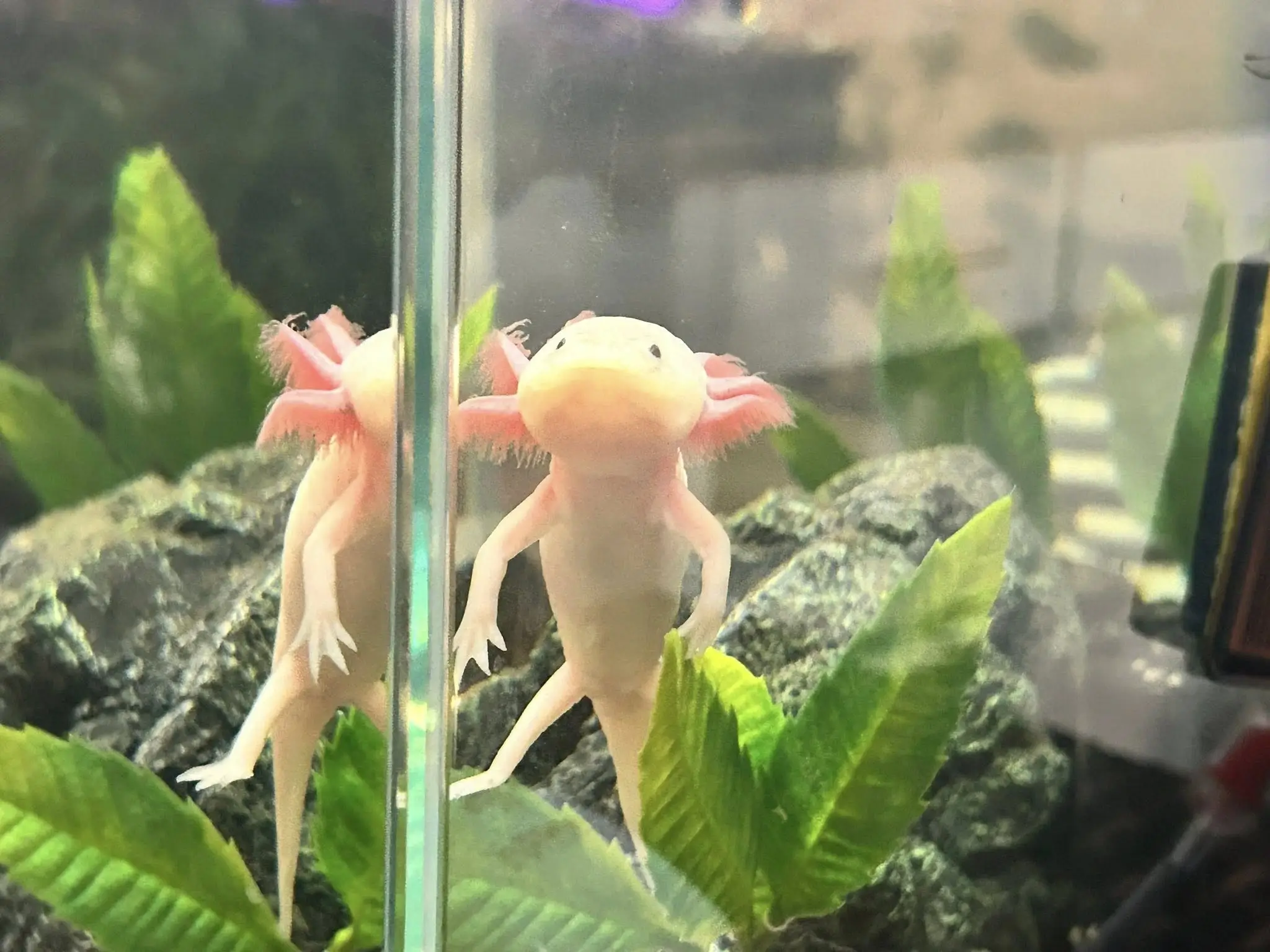If you’ve just brought home an axolotl (or are thinking about it), one of the first questions that probably popped into your mind is: what do these little guys eat?
Axolotls might look like cute underwater dragons, but when it comes to food, they’re actually pretty picky. And very much meat lovers.
If you’ve got a baby axolotl or a full-grown adult, their diet needs to match their size and stage of life. Here, I’ll walk you through exactly what to feed your axolotl, how often to feed them, and what to avoid so they stay happy, healthy, and well-fed. Let’s start!
Table of Contents
Understanding Your Axolotl’s Diet
Axolotls are obligate carnivores, and they eat meat to survive. But they are not active hunters. They are opportunistic hunters, and can simply swim around, and whenever a prey comes near their head, they eat it.
In the wild, axolotls can eat almost everything that fits in their mouth. This includes insects, insect larvae, worms, slugs, snails, small fish, tadpoles, salamanders (another axolotl) and crustaceans. However, in captivity, their diet differs, and you need to feed them differently.
Also, axolotl teeth are not designed for tearing or chewing food. They only have pedicellate teeth, which help to position their food. They eat food by sucking it.
If you are a beginner, you might come across the thought of feeding your axolotl chicken, fish or beef. But remember their digestive system cannot tolerate fibrous meat.
Plus, axolotls require a protein-rich diet that meets their nutritional needs. Anything with plant material is not suitable for axolotl bodies because they cannot digest excessive chitin or cellulose.
Feeding Guidelines by Life Stage
Axolotls need special care you should feed them a balanced diet. Type of food, size, and frequency are some key factors that vary with axolotl age. The dietary needs of hatchlings are different from adults. You should tailor the diet for proper growth and health.
| Life Stage and axolotl size | Recommended Food type | Feeding Frequency | Amount of Food |
| Hatchling (24-72 hours) | Live moving food, baby brine shrimp, microworms, small Daphnia, Moina. | 2-3 times a day. You can see their stomach changes color. | As much as they eat in few minutes. |
| Juvenile (4 weeks to 3 inches in size) | Live food, blackworms, Daphnia, adult brine shrimp. | Have a high metabolic rate, therefore, need 2-3 times daily food. | As much as they eat in few minutes. |
| Adult (4 -9 inches) | Can be fed with live and non-moving food, including earthworm pieces, red wiggler (blanched and cooled), pellets (occasionally) | 1-2 times daily, as they are still in the growing phase, so they require a variety of food | As much as they eat in few minutes. |
| Adult (9 inches to mature size) | Live food, non-moving food, earthworms, bloodworms (treat), pellets | 2-3 times weekly Once they hit adult full size, you can slow down feeding gradually. | As much as they eat in few minutes. |
Safe and Nutritious Food Types for Axolotls
A nutritious diet for an axolotl is a balanced diet that offer essential nutrients, like protein, fats, calcium, and other minerals. It should be easy to digest and free from pests or pathogens. Here are some safe food options:
1. Earthworms
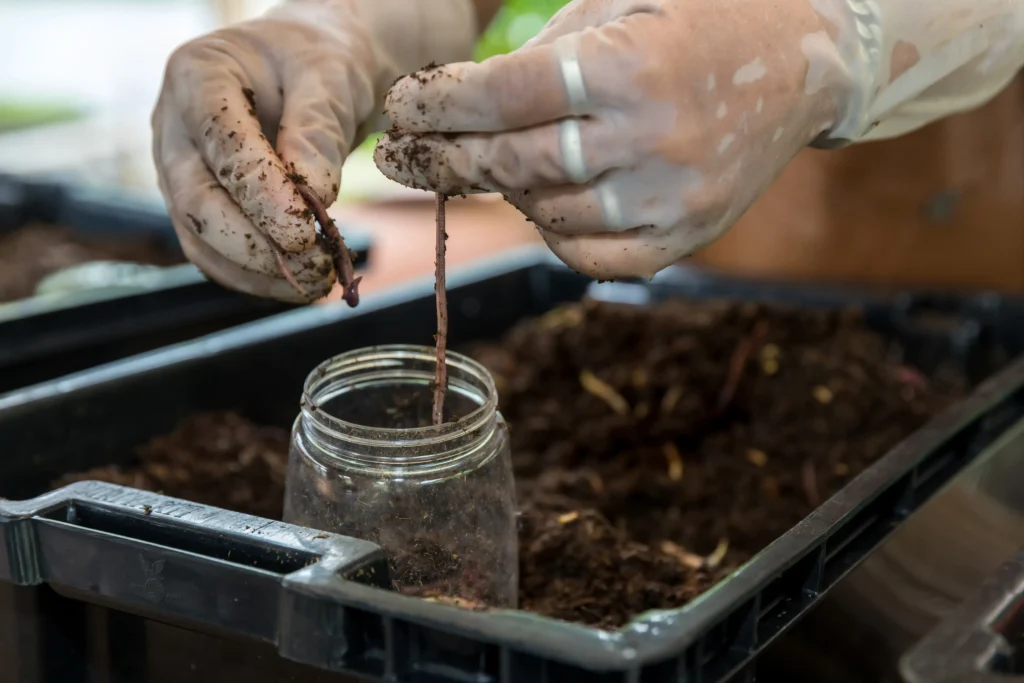
Earthworms are the safest and most highly nutritious food for axolotls. It is the staple food due to its high protein and calcium content, and it is low in fat. Also, the wriggling movement of worms stimulates the predatory instincts of axolotls, and they like to grab them.
Worms are a complete meal rich in protein. They contain more than 45 percent of protein, and support growth. Minerals such as calcium play also help improve bone health. I get my worms from Uncle Jim farm, and keep a good supply of them. Also, try vermicomposting if you wanna cut the costs.
You can feed red wigglers or nightcrawlers to your axolotls. Here are some other varieties of Lumbricidaefamily that you can also feed.
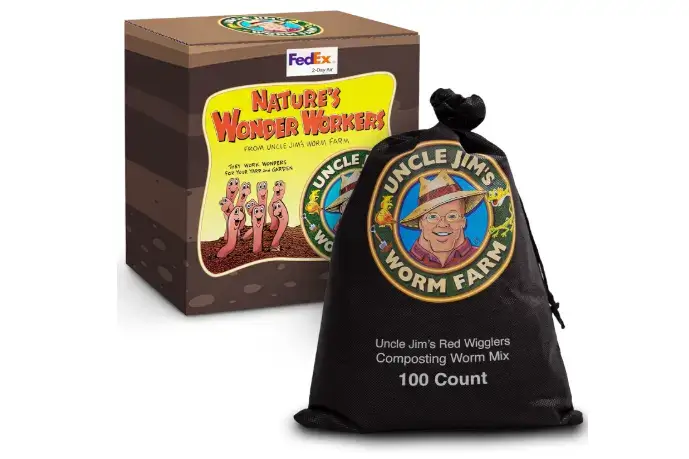
Let’s take a detailed look and their nutritional value.
a. Lumbricus Terrestris
Typically known as tiger worms, nightcrawlers, bait worms, Canadian crawlers, or fishing worms. They are reddish cream in color, with 10-25 cm in length.
b. Allolobophora Chlorotica/Aporrectodea Caliginosa
Commonly known as a British worm, field worm, or grey worm. These are 4-10 cm in length with a pale greyish-pink color.
c. Eisenia Hortensis
They are also known as European Nightcrawler, Dendrobaena veneta, Dendrobaena hortensis, and Dendra. These worms are brown-red with a size of 12-20 cm in length.
d. Eisenia Fetida
The most widely used worms that are fed to the axolotl are red wiggler, also known as compost worm, banded worm, manure worm, trout worm, and brandling worm.
Eisenia fetida has a deep, rust-colored body and ranges in length from 5 to 7 cm. These are considered as a highly nutritious diet for an axolotl. But your axolotl may dislike them due to their bitter taste. They secrete a bitter slime coat as a defense mechanism that may cause bitterness and your axolotl might refuse it. Try blanching to fix it.
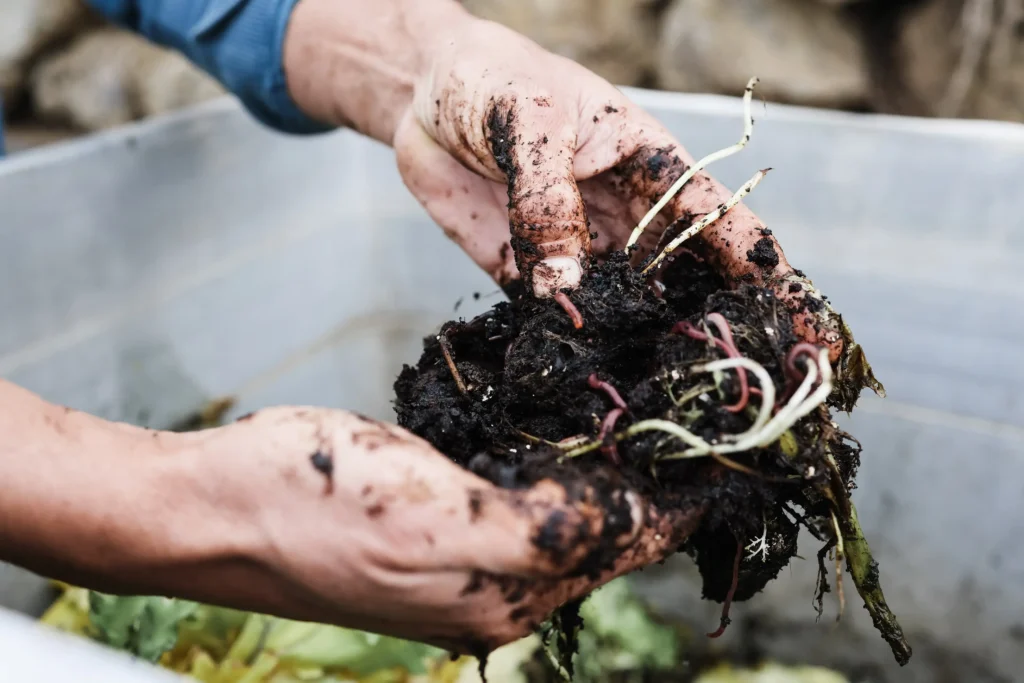
2. Daphnia
Daphnia pulex, or amphipods also known as water fleas are small aquatic crustacean. Daphnia are cheap but relatively stable food sources for axolotl and are rich in protein and fat. Baby daphnia makes an excellent diet for newly hatched axolotl due to quick protein, fat, and vitamin sources.
Daphnia can be home-cultured. Despite being a rich and secure food source for baby axolotl, they are not considered as a whole meal for adult axolotl, as their nutritional contents are not enough for them. Still, they make a great treat for axolotl, and you can occasionally feed them with other options.
3. Brine Shrimp
Artemia or Brine Shrimps are highly nutritious food available for axolotls. Feed new hatchlings with Baby Brine Shrimp (BBS). They are high in vitamins, lipids, and fatty acids and help in development and growth of baby axolotl. You can also feed them to adult axolotls. But prefer frozen brine shrimps over live shrimps to maintain the water quality.
4. Blood worms
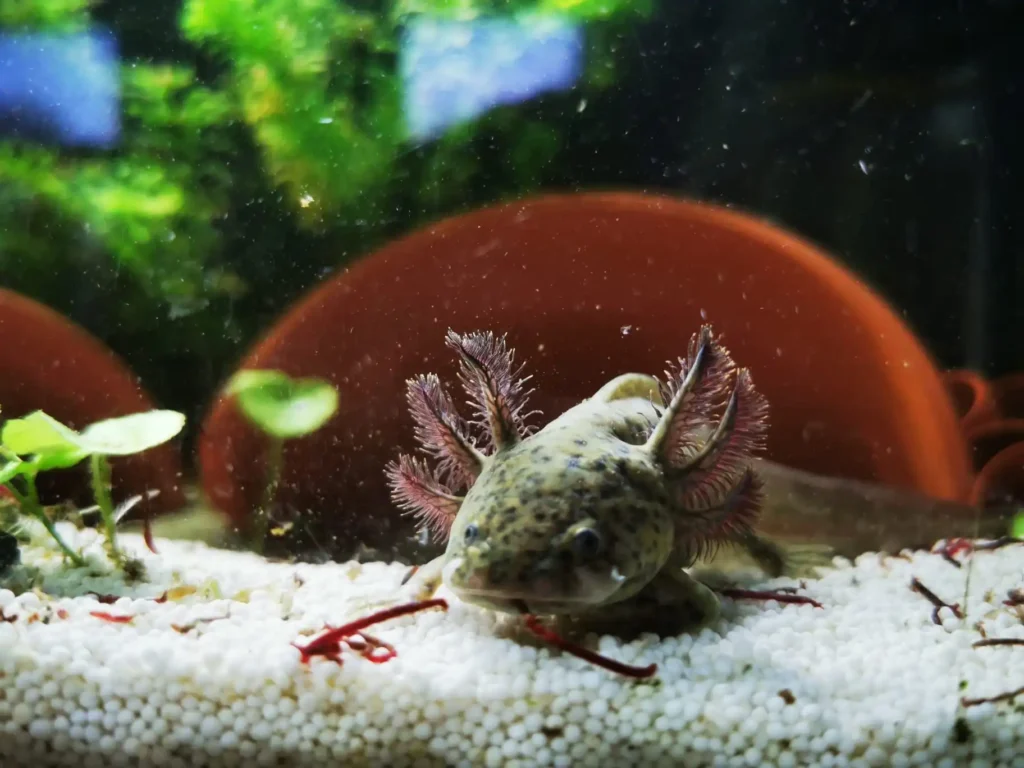
Blood worms (Chironomidae) are not actually worms but midge larvae. Due to their vibrant red color, they got their name. These are some of the favorite meals of an axolotl but are not very healthy.
The nutritional value of blood worms is also low compared to other food options. So solely depending on them is not a good choice. You can give them as an occasional treat along with a well-balanced diet. Thaw bloodworms in water before feeding.
5. Tubifex
A nutritious food option for young axolotl that is big enough to develop legs but is too small to consume earthworms. It is a good option but not highly nutritious. So do not solely on it to fulfill axolotl dietary requirements. Tubifex are safer if freeze-dried than live food as they may carry parasites, pathogens, and diseases.
6. White Worms
White worms are also a good food choice but the problem with them is their high oil and fat content. They are rich in protein but mineral and vitamin content is not well researched So, I prefer to give them as a treat occasionally. You can feed them to young and juvenile axolotls. The worms stay alive in water for several days.
7. Black worms
Black worms are a good source of protein and you can feed them. But see how your axolotl responds to various foods. Some simply enjoy black worms and others might have a hard time with them. But these are typically recommended for axolotl hatchlings.
8. High-Quality Sinking Carnivore Pellets


Carnivore pellets are specifically formulated for aquatic animals like axolotls. Live food is best for axolotl in terms of nutritional value. But you can use pellets to add variety.
Pellet quality is a major concern though. It should be free from artificial colors, preservatives, or flavors. Axolotl are bottom feeders so sinking pellets are easier to consume than floating pellets.
Give them as an occasional treat to your axolotl and avoid overfeeding as it may lead to constipation and bloating. I like Rangen Salmon Pellets and drop them occasionally in Lucy’s tank. Invert Aquatics pellets are also good enough. They are moist and have a soft texture. I put them in a bowl in the bottom of the tank; Lucy enjoys it and then I remove it.
9. Repashy Grub Pie
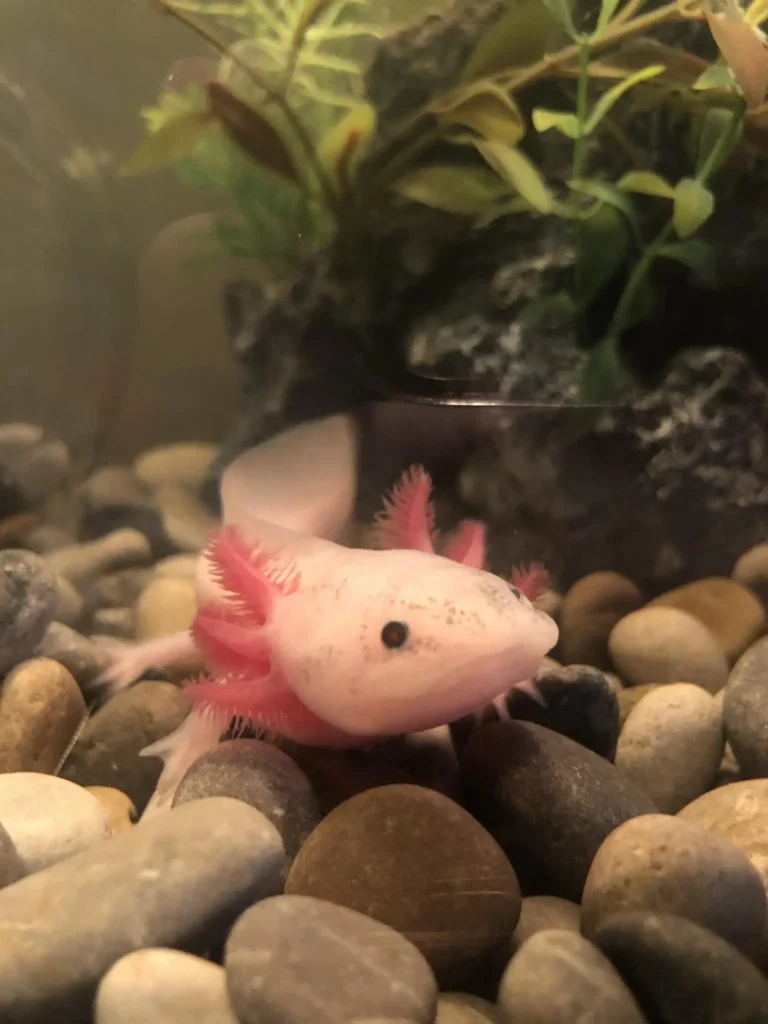

Lucy is a rescue, and initially when I got her, she won’t even touch worms. During any illness, or if your axolotl is refusing food, you can also try Repashy Grub Pie. It is nutrient‑rich powdered gel mix for insectivorous amphibians, including axolotls.
It typically contains around 38 % protein, 10 % fat, and 1.4 % calcium, and is a balanced food alternative to worms or pellets You can mix it with boiling water (1 part powder to 2–3 parts water), and it sets into a gel that can be molded, refrigerated up to two weeks, or frozen for long‑term use It is more digestible and nutrient‑dense than pellets.
Here’s some protein, fats, and calcium stats for axolotl food.
| Protein | Fats | Calcium | |
| Lumbricus terrestris | 56.1%-60.7 % | 4.4 % | 1.52% |
| Allolobophora chlorotica | 62.2% | 1.77 % | 1.72% |
| Eisenia fetida | 54.6%-70.42% | 1.89% | 1.72% |
| Daphnia | 55.2% | 6.6% | 0.1% |
| Brine shrimp | 55% | 14% | 5% |
| Black worm | 47.8% | 20.1% | 0.11% |
| Blood worms | 52.8% | 9.7% | 0.38% |
| Tubifex | 46.1% | 15.1% | 0.19% |
| White worm | 70% | 14.5% | – |
Also Read: Axolotl-Safe Live Tank Plants
Unsafe Food Types to Avoid
To avoid any health complications, you must be mindful about the food you offer your axolotl. They can gulp everything that fits in their mouths, even substrate or small decorations in the tank. So, you need to take care of that too to avoid any stress, illness, and impaction.
1. Feeder Fish
Feeder fish, such as goldfish or minnows, are not recommended due to the risk of parasites and disease transmission. For occasional treats, you can try guppies and Endler.
But source from a reputable store. A lot of fish contain thiaminase, which is an enzyme that breaks down Vitamin B1 (Thiamine). Prolonged feed can result in thiamine deficiency in axolotls.
Also, live fish pose a risk of nipping. They might harm the axolotl’s gills and fins if your axolotl won’t eat them.
2. Mammal Meat (Beef, Chicken)
Mammal meat, beef or chicken is too high in fat and complex protein that axolotls cannot digest. It may cause intestinal blockage, bloating, digestive upset, or illness.
3. Hard-Shelled Insects (Mealworms, Crickets, Superworms)
Exoskeletons of insects are difficult to digest by axolotl due to chitin. They can only digest soft-bodied insects. Hard ones may lead to impaction or choking.
4. Processed Foods
Human food or any cooked food contains salts, sugars, preservatives, and other ingredients harmful to axolotls. Also, they are not nutritionally balanced, so avoid feeding them to your axolotl.
5. Anything from Unsafe Environments
An unsafe environment means a location or source which you are not sure of, like picking worms from your garden or a nearby park. Live food often carries parasites with it, so do not trust it for your axolotl’s health.

Feeding Frequency and Amount Guidelines
Now, an important question: how much should you feed your axolotl? There is no right amount or portion size because the axolotl feeding routine may vary with their body condition.
A general guideline is that you should give them enough food that can be consumed within 3-5 minutes. For an adult, feed them 2-3 times weekly. However, juveniles need frequent feeding as they are in an active growing stage.
Monitor your axolotl’s girth after feeding. Typically, a slightly rounded belly is an indication of a good amount of meal. At the same time, a large belly might suggest overfeeding.
Common Feeding Methods
Axolotls are not active hunters, and they can miss food at a distance, too. For this reason, never leave the food unattended in the axolotl tank, hoping they will eat. They won’t!
I prefer spot feeding that grabs the axolotl’s attention. It will be easy to locate and clean uneaten food, too, and won’t disturb your water parameters.
Target Feeding with Tweezers:
Standard method for feeding worms or pellets. It allows precise delivery and less mess in the tank. Make sure to use soft-tipped tweezers to avoid injury.
Use a Turkey Baster
Turkey baster is also a great way to feed axolotl, especially small bloodworms or brine shrimp. It allows a target delivery without touching the food or putting your hands in the tank.
Drop Food Nearby
Some owners drop pellets or worms near the axolotl’s head to grab their attention. But you may miss it, so keep an eye out. Also, don’t let your live worms burrow. It’s risky, as most worms escape into the substrate or hide under the decorations.
Remove Uneaten Food
It is a must to remove the uneaten food after 10-15 minutes of feeding your axolotl. The uneaten food will start to decompose, and may cause foul-smell, compromised water quality, and an ammonia spike. Use a turkey baster or fine net to spot-clean the leftover food waste.
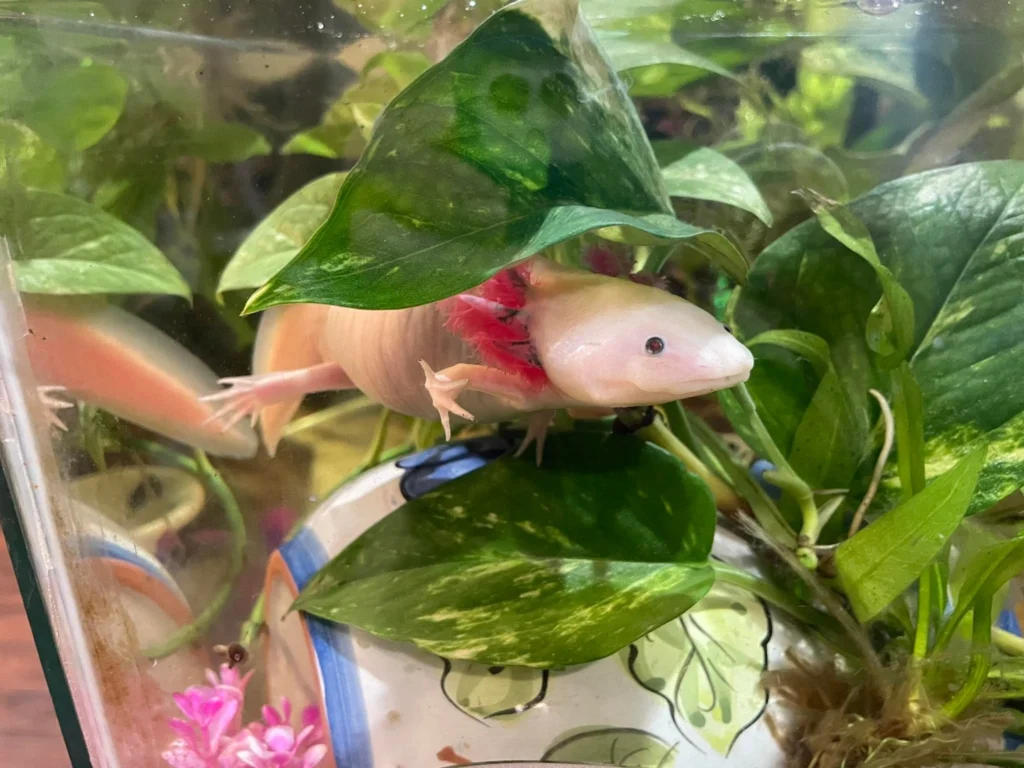
How to Prepare Live Food for Axolotl?
Preparing worms or other live food for axolotl is not hard. First, source them from a safe store. They should be free from pests, diseases, and other pathogens. Proper handling of live food is also a must to prevent bacterial contamination and preserve food quality. Here are some of the best practices:
1. Thaw Frozen Foods
Thaw your frozen food before feeding it to the axolotl. Thaw it in a small amount of dechlorinated water. Don’t microwave or leave it at room temperature for a long time. Feed the food immediately after thawing.
2. Chop Worms
There is no proper way to cut the worms. Just use a clean knife and cutting board. Chop the worms into bite-sized pieces (1 inch) or according to axolotl size.
3. Blanching
Some worms, such as red wigglers, produce a bitter slime for their defence, which is not great in taste. Axolotl often refuses to eat or spits it out.
To avoid this, blanching is recommended. Briefly submerge the worms in hot water for a few seconds and transfer them to cool water. It will eliminate the bitter taste and preserve the nutrients needed for the axolotl. After blanching, you can cut the worms as needed.
Storage Instructions
Live Worms: Store the live worms in a dark and cool place away from sunlight. A garage or basement is an excellent location for them. Check that the container has moist bedding, like a shredded newspaper, with adequate ventilation. Feed the worms appropriate food, such as vegetable scraps.
Frozen Foods: Store them in original packaging or an airtight container in the freezer. Always check the manufacturer’s guidelines for better product handling.
Pellets: Pellets are a dry item, so store them in a cool, dry place away from direct sunlight. It is best to store them in an airtight container to maintain their freshness.

Let’s Identify and Address Feeding Problems
1. Picky Eaters
Your axolotl may refuse to eat if you have recently brought them in. They need time to adjust to a new environment, so food refusal for a few days is okay.
But, if your axolotl is refusing only certain types of food, I think it’s okay too, as long as their nutritional needs are met. Lucy wouldn’t eat any kind of worms at start, but she adapted after some time. Some axolotls may refuse red wigglers due to their bitter taste, and you can try blanching.
2. Refusal to Eat
Refusal of food for more than a week indicates some underlying issues such as poor water quality (ammonia, nitrite, high temps) or stress. Always check water parameters first to know the root cause of the problem. Another reason for food refusal can be impaction due to substrate ingestion or some foreign substance in the water tank.
3. Regurgitation
Always chop the food into bite-sized pieces. Regurgitation is often caused by food being too large, or hard, or if the axolotl is eating quickly, which can upset the digestive system.
Also Read:
The Axolotl Diaries
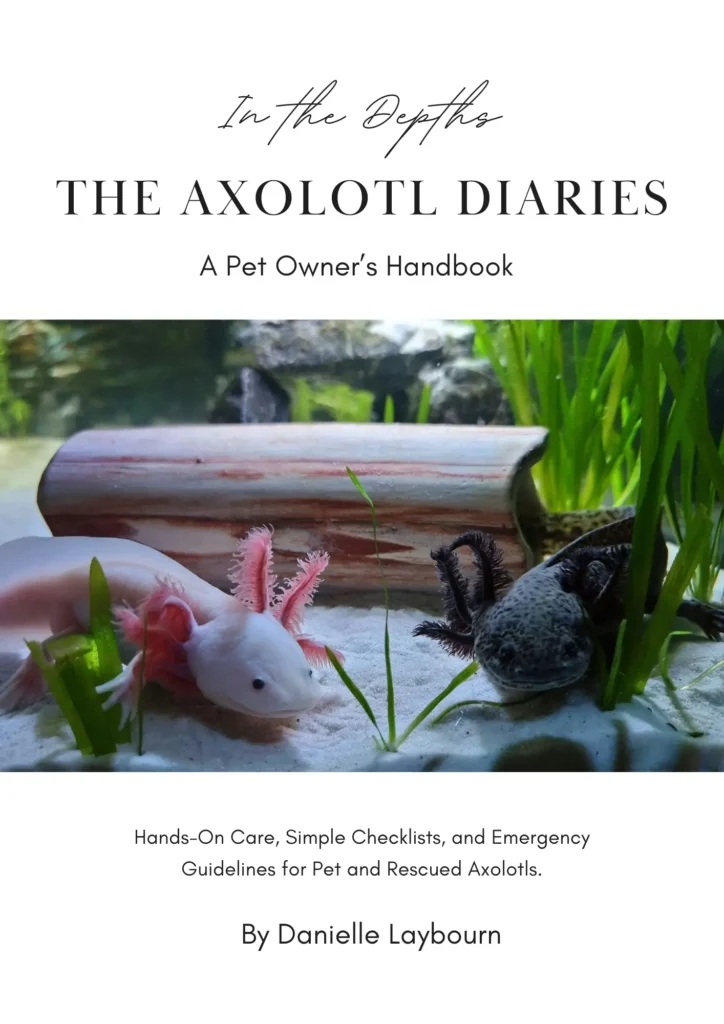
A clear, step-by-step handbook (50+ pages) about axolotl care that covers basics, safe tank requirements, cycling, feeding, common health issues, and more.
Rescue-informed and vet-aware. For anyone who wants to raise a healthy, happy axolotl.
Find everything in plain language, backed by real experience.
Grab printable cheatsheets, practical tips, and easy troubleshooting guide inside!
Price: $14.99
Summing Up
A healthy axolotl diet is one rich in protein and calcium, with an adequate amount of fat. And the ideal food rich in nutrients is earthworms.
Although there are a variety of worms for axolotl, nightcrawlers and red wigglers are the gold standard for axolotl health. Hatchlings and juveniles may require a different diet from other of an adult’s needs.
Lucy enjoys repashy grub pie, and I also drop a pellet or two while passing by. So, customize a proper diet according to axolotl size, preferences, and health to grow a happy axolotl.
Have any questions? Share your axolotl feeding routine and favorite diet in the comments!
Disclosure: This post contains affiliate links. As an Amazon Associate, I earn from qualifying purchases. It means that if you click on an Amazon link on this site and make a purchase, I may earn a small commission at no extra cost to you. Thank you for your support!
